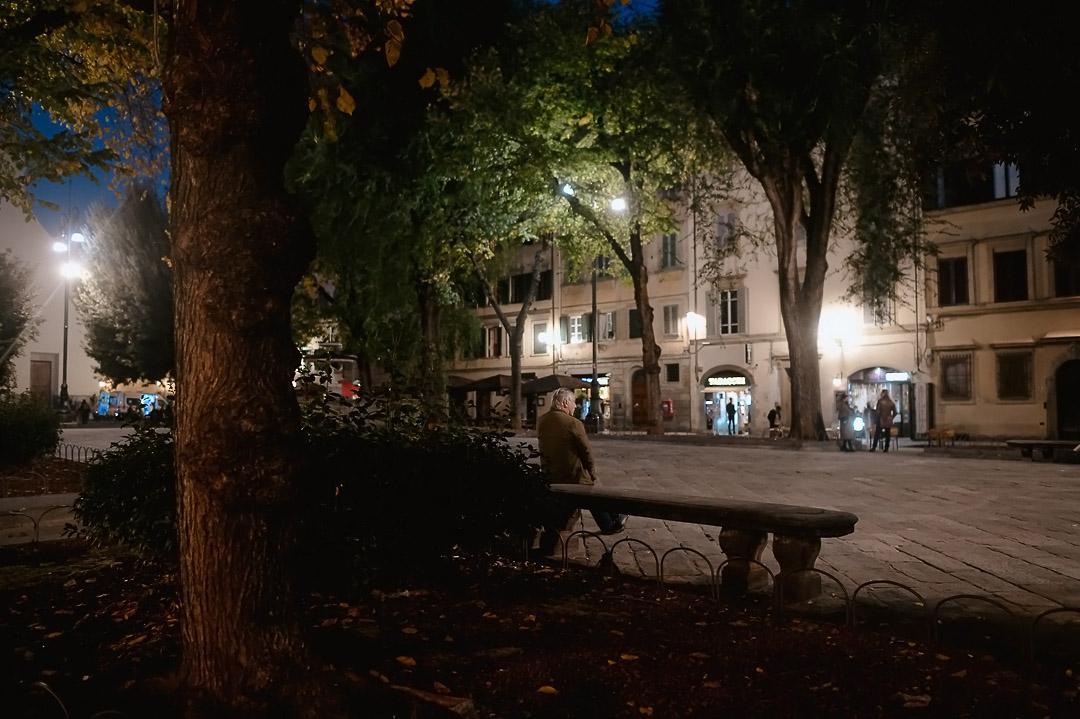On Tuesday night, a new presidential decree was signed by Italian Prime Minister Giuseppe Conte in an effort to curb the growing Covid-19 numbers throughout the country. The Prime Minister explained these measures in a live address in the evening of November 4.
The measures will enter into force on Friday, November 6 and are expected to remain in place until December 3.
While certain regulations will apply nationwide, including a curfew between 22:00 and 05:00, the closure of museums and weekend shuttering of shopping malls, the approach is to clamp down at a regional level through a colour-coded system indicating risk based on 21 parameters, which include the rT (transmission risk), the number of active clusters and the number of hospital beds available.
Tuscany will become an orange area on Wednesday, November 11.

Florence. October 28, 2020, early evening / ph. Francesco Spighi www.francescospighi.com
Nationwide rules
A nationwide curfew will enter into force throughout Italy between 22:00 and 05:00. Between these hours, people will only be allowed to leave their homes for work, health or situations of need. If stopped by the police, you will need to explain your reasons for being outside your home using a self-certification form, which you can download here.
All museums and exhibitions will be shuttered. Shopping centres will close at weekends, although food stores, pharmacies and newsagents situated in malls may remain open. A list of other closures can be found here.
Restaurants, coffee shops, pubs, ice-cream parlours and bakeries may only operate between 5am and 6pm. (These businesses will be forced to close in red and orange zones; see below.) No more than four persons may eat at the same table; this limit does not apply to persons who live together. Home delivery and takeaway services may operate until 22:00; food must not be eaten on the street near the business. Lessons will continue nationwide in person for infant nursery, primary and middle schools, but face protection is now mandatory for students at primary and middle schools, even when seated at their desks. Children under six years are exempt from wearing masks. Secondary schools and universities will only use distance learning methods.
Regional regulations
Each region in Italy will be categorized according to a colour-coded system: red (high risk), orange (medium-high risk) and yellow (medium risk) zones based on the rT (transmission risk), number of active clusters and the number of beds available.
Red zones
The red zones will enter a lockdown situation similar to restrictions in the spring with the closure of most shops, except for food stores, newsagents, pharmacies, dry cleaners and hairdressers. Bars, pubs, restaurants, ice-cream parlours and bakeries must close, although eateries may continue to offer takeaway until 22:00 and home deliveries (no time limit). Movement is strictly limited to work and need. Persons may only exercise in the vicinity of their home. Travel into and/or out of red zones is prohibited, unless you are returning to your place of residence, for work reasons or in situations of need, such as taking your children to school (only infant, primary and the first year of middle school will remain open). Lombardy, Piedmont, Calabria, Valle d’Aosta and Alto Adige have been declared as red zones.
Orange zones
Bars, pubs, restaurants, ice-cream parlours and bakeries must close, although eateries may continue to offer takeaway until 22:00 and home deliveries (no time limit). Movement is restricted to your municipality, unless for work, study, health reasons or in situations of need. Puglia and Sicily have been defined as orange zones. Abruzzo, Basilicata, Liguria, Tuscany and Umbria will become orange zones on Wednesday, November 11.
Yellow zones
All the remaining regions are defined as yellow zones: Campania, Emilia Romagna, Friuli Venezia Giulia, Lazio, Marche, Molise, Sardinia and Veneto. The nationwide regulations apply to yellow zones. (See above.)
Travel
A strong recommendation remains in place against all travel, unless for work, study and health reasons, for situations of need or to carry out activities or use services that have not been suspended. All persons are strongly encouraged to work from home as much as possible, whether in the public or private sector.
Home
The Italian Government strongly recommends that persons do not receive guests in their home, unless for work or for situations of need and urgency.
Article updated: November 9, 20:45






